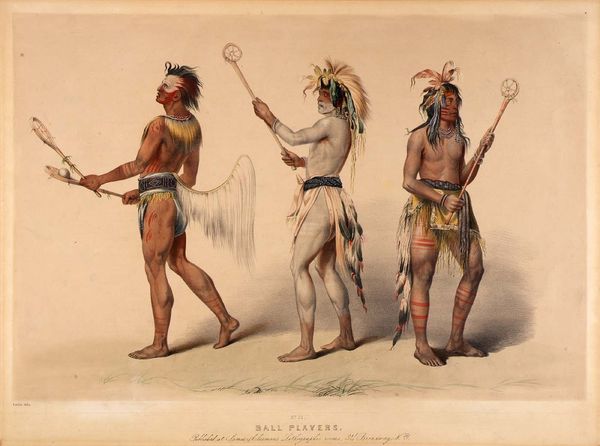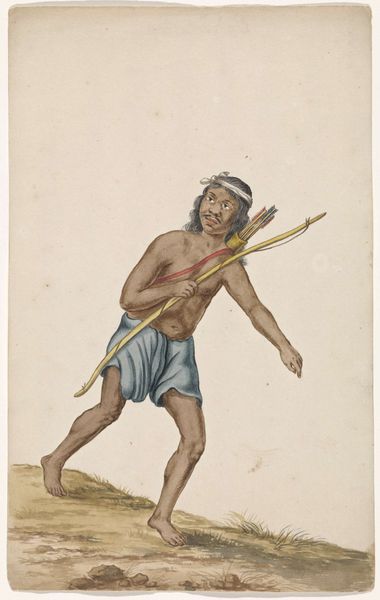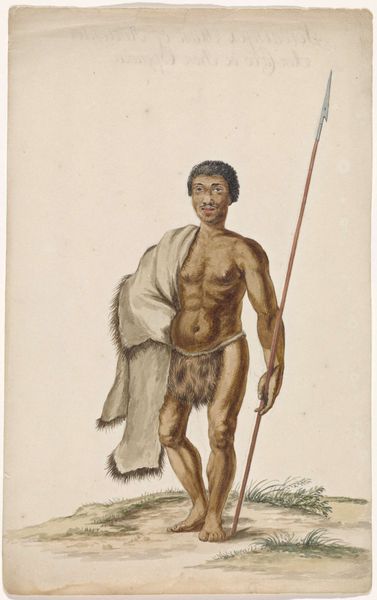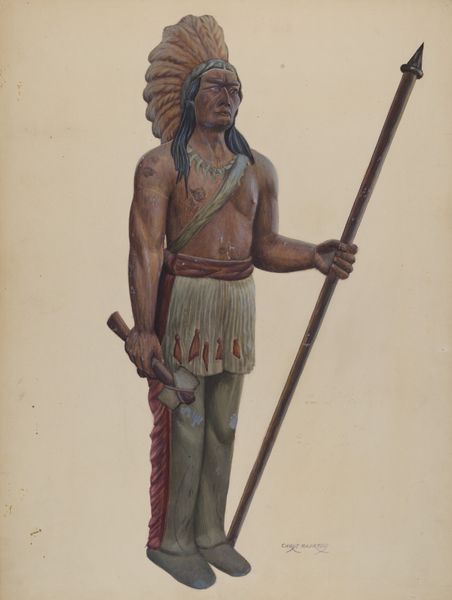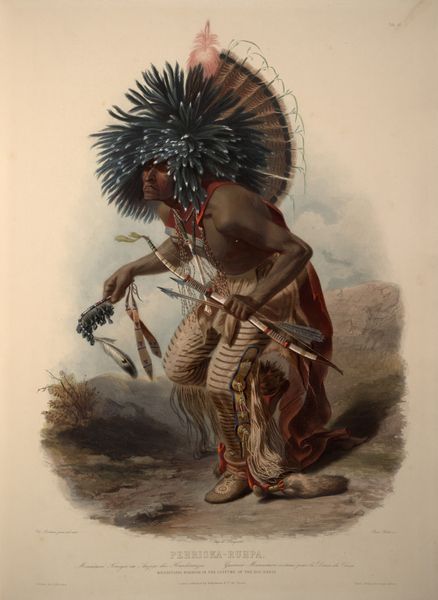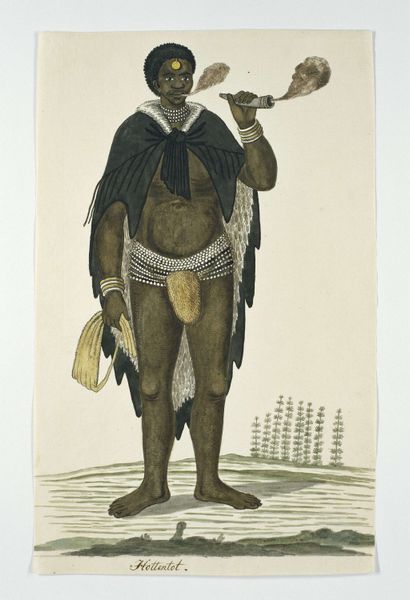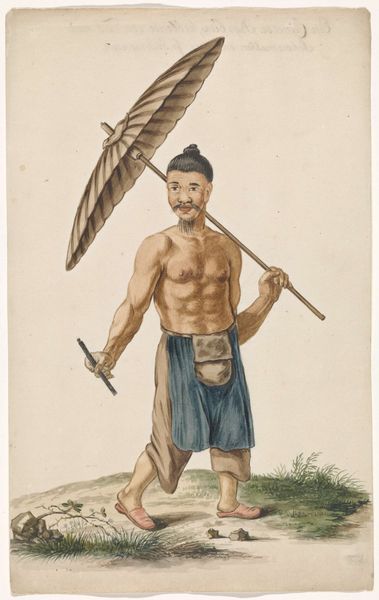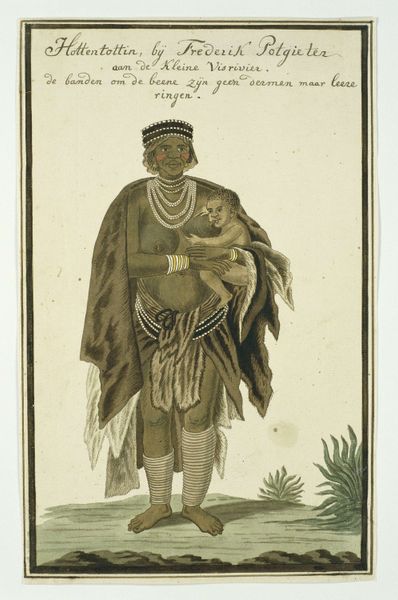
Copyright: CC0 1.0
Editor: So this is George Baxter's "Te Po, a Chief of Rarotonga". I'm struck by the intricate patterns on his skin. What does this image tell us about the materials and techniques used in its creation, and about the cultural context it represents? Curator: The print process itself is key. Baxter pioneered a method using oil-based colors applied with multiple plates. Consider how this industrialized printing, while attempting to capture the chief's likeness, also commodified and perhaps exoticized Rarotongan culture for a European audience. How does the material process influence our understanding? Editor: That's fascinating! It makes me think about the power dynamics inherent in the production and consumption of this image. Curator: Exactly. It's a reminder that art isn't just about aesthetics, but also about the social and economic systems that enable its creation and distribution. Editor: I hadn’t considered the printing process as part of the narrative. Thanks for pointing that out.
Comments
No comments
Be the first to comment and join the conversation on the ultimate creative platform.

